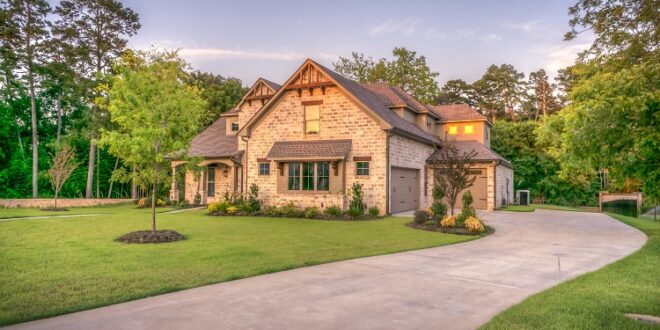Introduction
The concept of landscaping has evolved significantly over the years, transitioning from mere aesthetic enhancement to a profound emphasis on sustainability and environmental consciousness. In this era of ecological awareness, Premier Turf stands as a beacon, pioneering eco-friendly landscaping solutions that not only beautify spaces but also nurture the planet. This article delves into the world of sustainable landscaping, exploring its principles, techniques, and the remarkable benefits it offers to both nature and homeowners.
The Philosophy Behind Sustainable Landscaping
Defining Sustainable Landscaping
Sustainable landscaping is an innovative approach that integrates practices and designs aimed at creating environmentally sound and resource-efficient landscapes. It encompasses more than just planting greenery; it’s about creating a harmonious ecosystem that supports local wildlife, conserves resources, and minimizes its carbon footprint.
Benefits to the Environment and Homeowners
The advantages of sustainable landscaping are manifold. Environmentally, it helps in reducing pollution, conserving water, and supporting biodiversity. For homeowners, it means lower maintenance costs, an increase in property value, and the satisfaction of contributing positively to the environment.
Key Components of Sustainable Landscaping
Native Plant Selection
Choosing native plants is a cornerstone of eco-friendly landscaping. These plants are adapted to the local climate and soil, requiring less water, fewer pesticides, and minimal care compared to non-native species.
Efficient Water Use and Irrigation
Sustainable landscaping emphasizes efficient water usage. Techniques like drip irrigation, rain gardens, and proper soil management ensure that every drop of water is used effectively.
Natural Pest Management
Instead of relying on harmful chemicals, eco-friendly landscaping employs natural pest control methods. This includes encouraging beneficial insects, using organic pesticides, and practicing crop rotation.
Innovative Techniques in Eco-Friendly Landscaping
Rainwater Harvesting and Greywater Use
Rainwater harvesting systems and the use of greywater for irrigation are innovative solutions in sustainable landscaping. These practices significantly reduce the dependency on municipal water supply and help in conserving water.
Solar-Powered Landscape Lighting
Solar-powered lighting is a sustainable alternative that reduces electricity consumption. These lights harness the power of the sun, offering a green solution for illuminating landscapes.
Use of Recycled and Sustainable Materials
Sustainable landscaping also involves the use of recycled materials for garden beds, pathways, and structures. This not only reduces waste but also adds a unique aesthetic appeal to the landscape.
Enhanced Native Plant Selection
Beyond the basic choice of native plants, sustainable landscaping involves creating micro-habitats that cater to specific wildlife, such as pollinators and native birds. For instance, incorporating flowering plants like Echinacea and Lavender not only adds beauty but also attracts and nourishes bees and butterflies, vital for ecosystem balance.
Advanced Water Conservation Techniques
Innovative water conservation goes beyond efficient irrigation. Techniques like xeriscaping, which involves designing landscapes to minimize water use, and the creation of bioswales, which naturally filter stormwater, play a crucial role. An example can be seen in arid regions where landscapes are designed with cacti and succulents, drastically reducing water usage while maintaining aesthetic appeal.
Holistic Pest Management Strategies
In natural pest control, introducing predator species, like ladybugs to combat aphids, exemplifies a balanced ecosystem approach. Additionally, companion planting, where certain plant combinations naturally repel pests, is a technique gaining traction. For example, planting marigolds near vegetables can deter nematodes and other pests, reducing the need for chemical interventions.
These enhanced practices and examples illustrate the depth and potential of sustainable landscaping. They represent not just a method of gardening but a philosophy of coexisting with nature in a mutually beneficial way. As these techniques become more widespread, they offer a blueprint for a greener, more sustainable future in landscaping.
Case Studies: Success Stories in Sustainable Landscaping
Residential Success Story
One notable example is a residential project where sustainable landscaping transformed a conventional garden into an eco-friendly paradise. The project included native plant gardens, an efficient irrigation system, and a composting setup.
Commercial Landscaping Achievement
In the commercial sector, a corporate campus adopted sustainable landscaping practices. This included large-scale rainwater harvesting, solar lighting, and extensive use of native plants.
Community Impact and Public Spaces
Public spaces like parks and community gardens have also embraced sustainable landscaping. These areas serve as models for sustainable practices, promoting community involvement and environmental education.
Future Trends in Sustainable Landscaping
Technological Innovations
The future of sustainable landscaping is bright, with emerging technologies like smart irrigation systems and eco-friendly fertilizers paving the way for more efficient and effective practices.
The Role of Policy and Public Awareness
Increased public awareness and supportive policies are crucial for the widespread adoption of sustainable landscaping. These factors will drive the industry towards more innovative and environmentally responsible practices.
Predictions for the Future of Eco-Friendly Landscaping
Predictions suggest a significant shift towards sustainable landscaping, with more homeowners and businesses opting for eco-friendly solutions. This trend is expected to grow as awareness and technology advance.
Conclusion
Choosing eco-friendly landscaping is more than a trend; it’s a commitment to preserving our planet for future generations. Companies like “Premier Turf And Landscaping Inc” are at the forefront of this movement, showcasing that beauty and sustainability can coexist harmoniously. As we look towards the future, it’s clear that sustainable landscaping will play a pivotal role in shaping our environment and our relationship with nature.
 HammBurg Be informed with latest news, reviews, entertainment, lifestyle tips, and much more.
HammBurg Be informed with latest news, reviews, entertainment, lifestyle tips, and much more.




